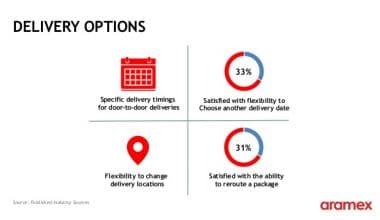Online marketplaces are an increasingly popular way for entrepreneurs to sell their products and services. They offer a great opportunity for anyone looking to start their own business and reach a global audience. But with so many online marketplaces out there, it can be hard to know which one is right for you and your business. In this article, we will look at the three main types of online marketplaces, the easiest item to sell online, how to start selling on the marketplace, what the most popular online selling sites are, and which ones are the best to sell on.
Introduction to Online Marketplaces
An online marketplace is a platform or website where buyers and sellers can come together and conduct transactions. It is like an online version of a physical marketplace, where buyers and sellers can meet up to exchange goods and services. Online marketplaces are popular because they provide a convenient way for buyers and sellers to find each other and conduct transactions without having to meet in person.
The online marketplace model has been around for many years, but the recent surge in the popularity of e-commerce has led to the development of many new online marketplaces. There are now hundreds of online marketplaces available, from well-known platforms like eBay and Amazon to smaller, niche marketplaces like Etsy and Fiverr.
How Do Online Marketplaces Work?
Online marketplaces work by connecting buyers and sellers in a virtual marketplace. Buyers and sellers create profiles on the platform and post their listings, which buyers can then browse and purchase. When a buyer purchases an item, the marketplace will take a commission and transfer the funds to the seller.
The marketplace is responsible for processing payments, resolving disputes, and providing customer service to buyers and sellers. They also provide an advertising platform for sellers to reach potential customers, and often provide tools and resources to help seller’s market and manage their businesses.
The Most Significant Benefits of Selling on Online Marketplaces
With the growing popularity of ecommerce marketplaces and online purchases, these channels are continually devising new ways to keep clients satisfied.
This is wonderful news for third-party vendors.
It means that most marketplaces will go to considerable pains to make marketing, selling, and fulfilling as simple as possible for brands and retailers.
Why? Because the easier it is for you to utilize the platform, the better the experience for shoppers will be – and the more likely they will return for more.
This manifests itself in three very appealing benefits:
#1. Easy Launching.
If you’re new to selling online, marketplaces can be a great method to create cash and establish your brand while driving attention to your new ecommerce website. Once you’ve been approved as a third-party seller on marketplaces, all you have to do is upload your product stream and start selling.
Higher-end marketplaces are also usually easier to link with, allowing customers to leverage their SaaS solution to expedite procedures while safeguarding themselves from any threats.
#2. Well-Established Programs
All of the largest and most well-known online marketplaces have programs in place to assist you in efficiently navigating the waters of marketing, selling, and fulfillment.
Amazon Marketplace, eBay, and Google merchants, for example, have access to Amazon Advertising, eBay Promotions Manager, and Google Shopping Actions. These digital marketing strategies are jam-packed with resources that will assist you in getting your new products in front of the appropriate clients at the right time.
Similar solutions are available to assist vendors in meeting customer expectations for quick, free delivery. You can, for example, employ services like Fulfillment by Amazon (FBA) and eBay Global Shipping to have the marketplace warehouse choose, pack, and ship items on your behalf.
#3. Large Customers Base
As you might expect, many marketplace operators have large built-in audiences of consumers who shop at these sites on a regular basis.
Consider this: between Amazon, eBay, and Walmart, there are approximately 3 billion active monthly visitors.
Did you know that many of those shoppers begin their search for products on marketplaces?
They don’t bother with Google or store websites at all. Amazon is currently where 49% of all product searches begin (and frequently end).
If your products aren’t appearing in those search results, your competitors may land the marketplace sale before customers even consider visiting your online store.
Read Also: HOW TO DROPSHIP: Best Easy Guide & How to Start 2023 (Updated)
Selling on Online Marketplaces: Business Strategies
Selling on marketplaces does not have to be an all-or-nothing affair, contrary to common opinion.
Sure, there are ways to completely integrate your company into the realm of marketplaces. There are equally efficient ways to take your time and test out other possibilities if you like to take your time.
Consider the following two approaches:
#1. Starting a new business on marketplaces.
Selling on ecommerce marketplaces is a good place to start if your small business is searching for a quick and easy way to get products in front of customers.
While your options may be little more limited than those of renowned brands and merchants, there are still enough to consider.
For example, marketplaces with tight admission standards, such as Walmart or Target Plus, want to see a history of on-time delivery and favorable feedback before approving you as a third-party vendor.
Others, such as Amazon and eBay, will allow you to create a seller account right away. Once you’ve begun to accumulate favorable feedback and ratings on those platforms, you can apply to sell on more marketplaces.
#2. Adding marketplaces to your existing online store.
Even if you already have a successful online business, submitting your products to specific ecommerce marketplaces is a great method to broaden your reach.
In fact, by not adding marketplaces into your plan, you may be losing sales.
Why? Customers have come to expect several options while purchasing the same goods.
This is especially true for Amazon, where an estimated 63% of customers claim they always check pricing on Amazon before making a purchase on another site.
That is just on Amazon. More than 33% of customers start their product search on store websites, while 25% start their customer journey on other online marketplaces.
You can assist shoppers find the information and deals they need to buy where, when, and how they want by expanding your online business to these platforms.
Steps to Successfully Leverage Online Marketplaces
While thousands of various techniques might be tested in each marketplace, only a few have endured the test of time.
These seven actions will go a long way toward ensuring the long-term success of your new marketplace account.
#1. Product content should be optimized.
There are product listings that customers see and product listings that customers purchase.
What is the distinction?
Your product information. Product titles, descriptions, and categories frequently entice customers to buy. The more effort you put into these, the more likely your listings will appear near the top of marketplace search results. Feedonomics, for example, helps improve your marketplace postings to increase sales and visibility.
Take the time to research the best keywords, write appealing product descriptions, choose the ideal categories, and optimize your photos.
#2. Make plans to advertise.
The vast majority of product pages contain advertisements. These are not, however, the popups and banners that most users block or ignore. These advertisements are clicked.
If you want to be genuinely successful on marketplaces, you’ll need to engage in some digital marketing to assist bring your products to the forefront.
For example, ChannelAdvisor vendors that advertise on Amazon grow at a 63% quicker rate than those who do not.
#3. Profits should be calculated.
Each online marketplace has its own set of fees, commissions, and regulations for sellers. These costs might be complicated and difficult to translate.
Investing time today to grasp these distinctions will ensure that they are profitable channels for you tomorrow.
#4. Make your pricing automated.
You may have set prices for your online store, but that doesn’t imply those prices will be carried over to each marketplace.
Keep in mind that customers frequently have a variety of options for purchasing the same goods at varying rates inside marketplaces.
To remain competitive in this market, you must modify the price of each product up or down dependent on the pricing of your competitors. Even a few cents can be enough to seal the deal. To automate this process, many vendors employ algorithmic repricers.
#5. Expand your shipment plan.
Marketplace customers in 2022 expect more than just fast, free shipping. They are expecting it.
Customers increasingly demand free shipping, and 26% will abandon a shopping cart if shipping is too slow.
Fulfillment costs could quickly eat into your revenues if you don’t find a cost-effective strategy to meet these expectations. As a result, constant access to the most competitive carrier pricing and delivery alternatives is critical.
There are various approaches you may use to vary your shipping strategy. Some sellers use programs like Amazon FBA, while others use third-party logistics firms like ShipBob or ShipStation.
Many utilize a combination of procedures to provide the quickest and most cost-effective alternative for each order. In this case, you may employ private carriers like UPS and FedEx for some orders and the USPS for others.
#6. Prepare to grow.
If you’re serious about expanding your ecommerce business, you’ll want to start with a few online marketplaces.
The idea is to streamline your growth when you do this. Many businesses rely on an ecommerce platform that is designed to interact with dozens of different marketplaces. Instead of uploading your product data each time you decide to expand, you can simply add your data and list products once — and then notify the platform when it’s time to share it with another marketplace.
#7. Inform your customers.
Last but not least, remember to share the word! Send an email, make a social media push, or include call-to-action buttons on your website.
Whatever you decide, make sure your clients are aware that they may now purchase from you on their preferred marketplaces.
Best Marketplaces Online
When it comes to choosing an online marketplace, there are many different options to consider. The best online marketplace for you will depend on what type of items you are selling and what your goals are. Here are some of the most popular online marketplaces:
- eBay: eBay is one of the oldest and largest online marketplaces. It is a great place to sell a variety of items, including electronics, collectibles, and fashion.
- Amazon: Amazon is one of the most popular online marketplaces. It is a great place to sell a variety of items, including books, electronics, and fashion.
- Etsy: Etsy is an online marketplace for handmade and vintage items. It is a great place to sell handmade jewelry, crafts, and other unique items.
- Fiverr: Fiverr is an online marketplace for freelance services. It is a great place to offer services such as graphic design, web design, and writing.
- Shopify: Shopify is an online marketplace for creating and managing an online store. It is a great place to set up an online store and start selling a variety of items.
What Are the 3 Main Types of Online Marketplaces?
There are three main types of online marketplaces:
- General marketplaces: General marketplaces are open to all types of sellers and buyers. These marketplaces are great for selling a wide range of products and services. Examples of general marketplaces include eBay, Amazon, and Shopify.
- Niche marketplaces: Niche marketplaces are specialized online marketplaces focused on a particular type of product or service. These marketplaces are great for selling specific items and services. Examples of niche marketplaces include Etsy and Fiverr.
- Art marketplaces: Art marketplaces are online marketplaces specifically for the art. These marketplaces are great for selling artwork, sculptures, and other pieces of art. Examples of art marketplaces include ArtPal and Artfinder.
What is the Easiest Item to Sell Online?
The easiest item to sell online is one that is in demand and has a low barrier to entry. Some of the most popular items to sell online include books, electronics, fashion items, and handmade crafts.
Books are a popular item to sell on online marketplaces because they are in high demand and there is a low barrier to entry. All you need to do is find a book that is in demand and list it on an online marketplace.
Electronics are also a popular item to sell online. They are usually in high demand and there is a low barrier to entry. You can find a wide range of electronics to sell on online marketplaces, from TVs and laptops to phones and tablets.
Fashion items are also popular items to sell online. They are in high demand and there is a low barrier to entry. You can find a wide range of fashion items to sell on online marketplaces, from clothing and accessories to shoes and jewelry.
Handmade crafts are also popular items to sell online. They are in high demand and there is a low barrier to entry. You can find a wide range of handmade crafts to sell on online marketplaces, from jewelry and pottery to woodworking and crochet.
How Do I Start Selling on the Marketplace?
Starting to sell on an online marketplace is relatively easy. The first step is to create a seller profile on the platform. You will need to provide information such as your name, address, and payment information.
Once your profile is created, you can start listing items for sale. You will need to provide information such as the item’s title, description, price, and images.
Once your items are listed, buyers will be able to find them and purchase them. When a buyer purchases an item, the marketplace will take a commission and transfer the funds to your account.
What is the Most Popular Online Selling Site?
The most popular online selling site is eBay. eBay is one of the oldest and largest online marketplaces, and it is a great place to sell a variety of items, including electronics, collectibles, and fashion.
Conclusion
Online marketplaces are a great way for entrepreneurs to start their own businesses and reach a global audience. They offer a convenient and cost-effective way to conduct transactions and reach potential customers.
When choosing an online marketplace, it is important to consider what type of items you are selling and what your goals are. There are many different online marketplaces available, from well-known platforms like eBay and Amazon to smaller, niche marketplaces like Etsy and Fiverr.
No matter which online marketplace you choose, the most important thing is to start selling. Start by creating a seller profile, listing your items, and then start promoting your products and services. With a little bit of hard work and dedication, you can build a successful online business.
Related Articles
- HOW TO SELL CLOTHES ONLINE: Detailed Step-By-Guide
- SMALL BUSINESS FUNDING: Top New 15+ Options in 2023 (+ Free Tips)
- Business Model: Definitions, Examples, and Types
- Security Risks and Concerns Regarding Bitcoin
- WHERE TO SELL USED CLOTHES FAST IN 2023






